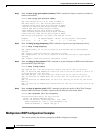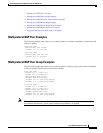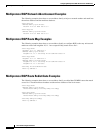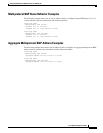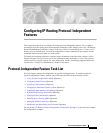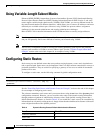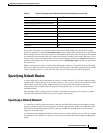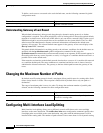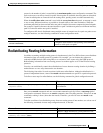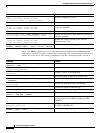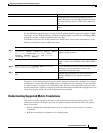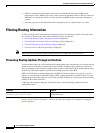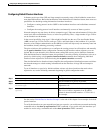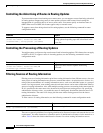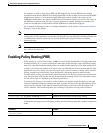
Configuring IP Routing Protocol-Independent Features
Changing the Maximum Number of Paths
IPC-366
Cisco IOS IP Configuration Guide
To define a static route to a network as the static default route, use the following command in global
configuration mode:
Understanding Gateway of Last Resort
When default information is being passed along through a dynamic routing protocol, no further
configuration is required. The system periodically scans its routing table to choose the optimal default
network as its default route. In the case of RIP, there is only one choice, network 0.0.0.0. In the case of
IGRP, there might be several networks that can be candidates for the system default. The Cisco IOS
software uses both administrative distance and metric information to determine the default route
(gateway of last resort). The selected default route appears in the gateway of last resort display of the
show ip route EXEC command.
If dynamic default information is not being passed to the software, candidates for the default route are
specified with the ip default-network global configuration command. In this usage, the
ip default-network command takes an unconnected network as an argument. If this network appears in
the routing table from any source (dynamic or static), it is flagged as a candidate default route and is a
possible choice as the default route.
If the router has no interface on the default network, but does have a route to it, it considers this network
as a candidate default path. The route candidates are examined and the best one is chosen, based on
administrative distance and metric. The gateway to the best default path becomes the gateway of last
resort.
Changing the Maximum Number of Paths
By default, most IP routing protocols install a maximum of four parallel routes in a routing table. Static
routes always install six routes. The exception is BGP, which by default allows only one path to a
destination.
The range of maximum paths is one to six paths. To change the maximum number of parallel paths
allowed, use the following command in router configuration mode:
Configuring Multi-Interface Load Splitting
Multi-interface load splitting allows you to efficiently control traffic that travels across multiple
interfaces to the same destination. The traffic-share min router configuration command specifies that
if multiple paths are available to the same destination, only paths with the minimum metric will be
installed in the routing table. The number of paths allowed is never more than six. For dynamic routing
Command Purpose
Router(config)# ip default-network network-number
Specifies a default network.
Command Purpose
Router(config-router)# maximum-paths maximum
Configures the maximum number of parallel paths
allowed in a routing table.



